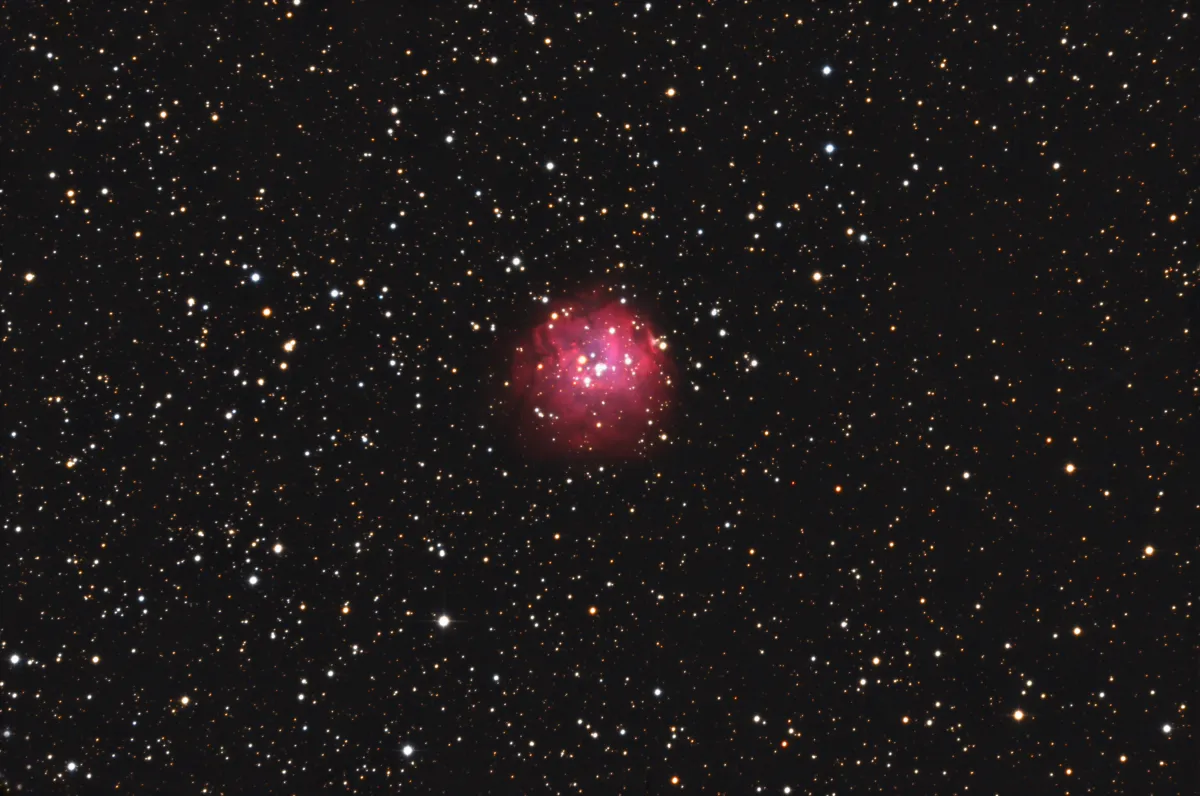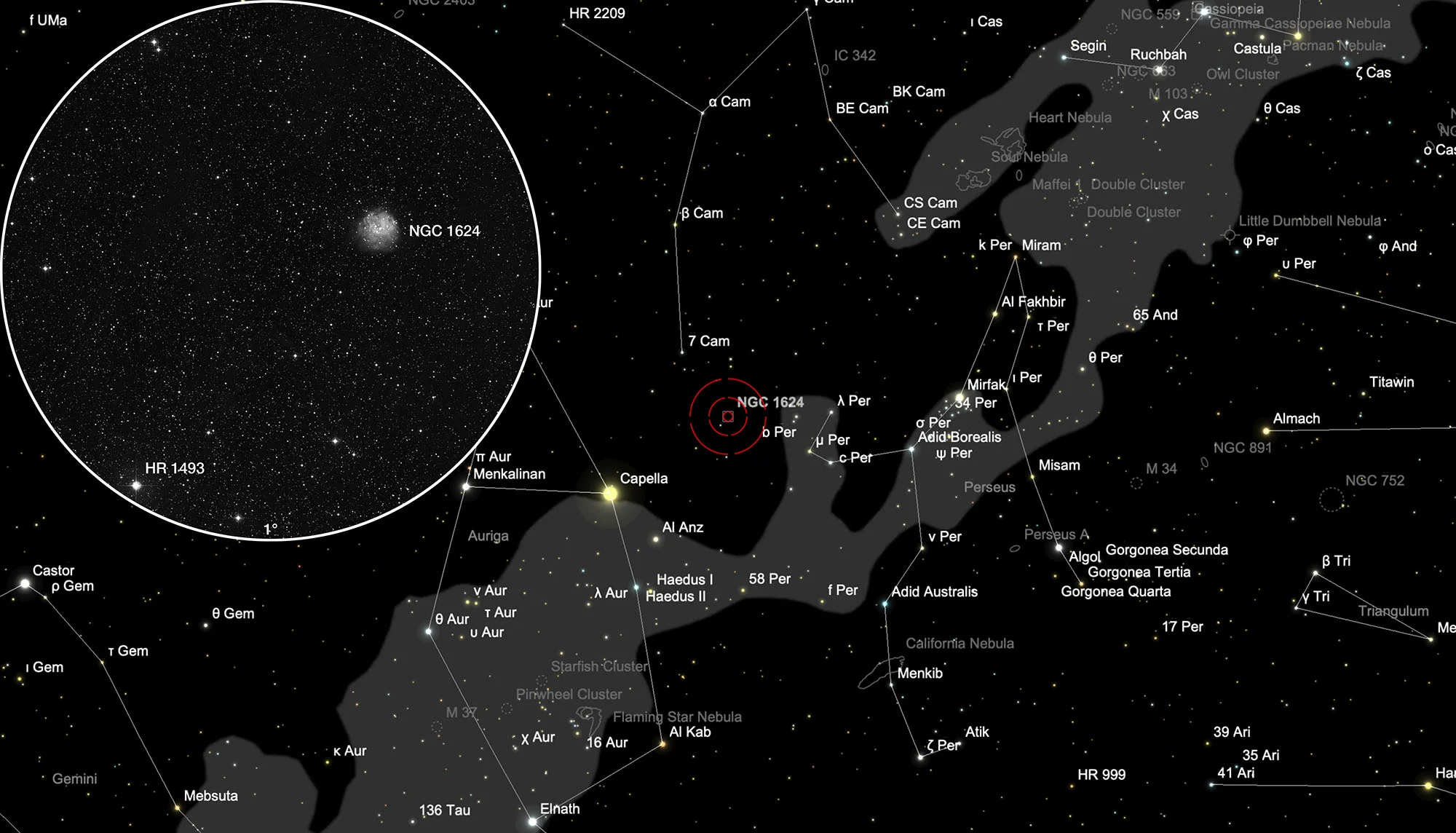NGC 1634: Cluster with Nebula

History
NGC 1624 was discovered on 28 December 1790 by the German-British astronomer William Herschel with his self-made 18.7 "f / 12.8 reflector telescope in Slough, England. [196, 277]
Physical Properties
This is a young star cluster, embedded in the H-II nebula Sh2-212, which surrounds the star cluster like a shell. The age is estimated to be around four million years. The cluster consists of several massive main sequence stars and a large number of pre-main sequence stars. The brightest star is NGC 1624-2 near the centre of the cluster. This star is the source of strong X-rays and rotates with a very strong magnetic field. About a fifth of the pre-main sequence stars are surrounded by dust disks. The cluster lies in the direction of the galactic anti-centre at a distance of 6.0 ± 0.6 kpc. [445]
| Designation | NGC 1624 |
| Type | OCL (I2pn) |
| Right Ascension (J2000.0) | 04h 40m 36.4s |
| Declination (J2000.0) | +50° 27' 42" |
| Diameter | 3 arcmin |
| Visual magnitude | 11.8 mag |
| Metric Distance | 6.025 kpc |
| Dreyer Description | F, cL, iF, 6 or 7 st + neb |
| Identification, Remarks | WH V 49; GC 879; OCL 403; LBN 722; Ced 37; S 212 |
Finder Chart
The star cluster with H-II nebula is located in the constellation Perseus. The best time to observe is August to May, when it is highest at night.
